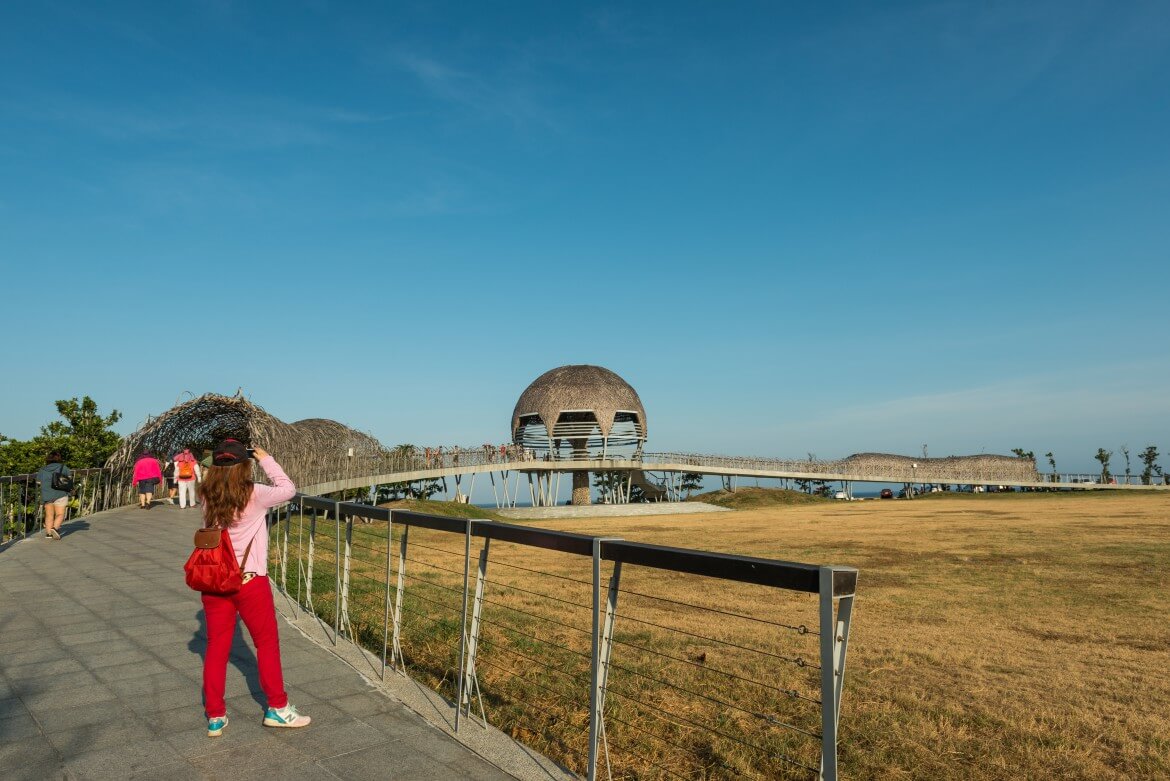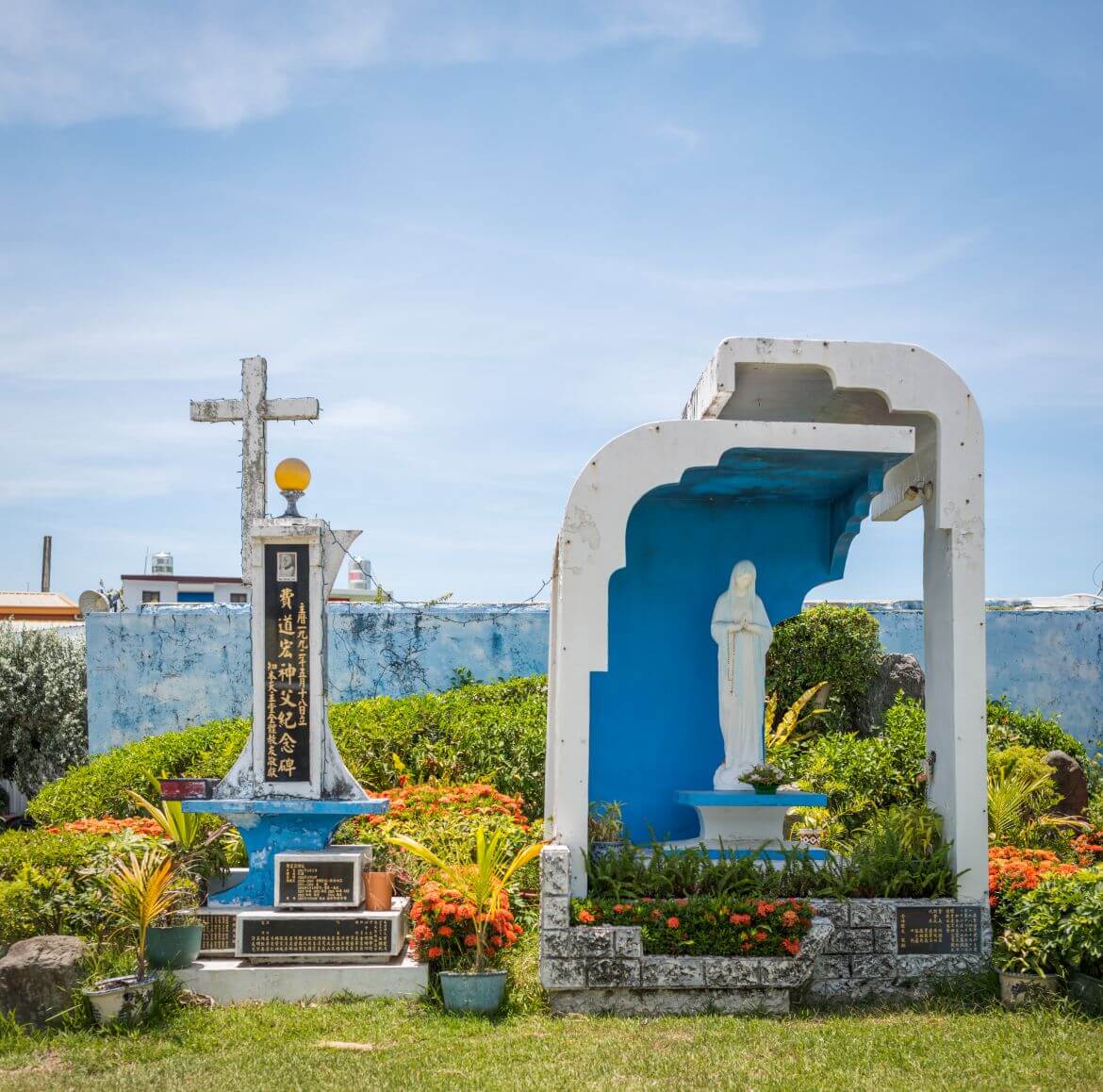Text: Steven Crook
Photos: Rich Matheson
With a population of just 107,000, Taitung City doesn’t come close to being a major urban center. What it is: an excellent base from which to explore the east coast and the East Rift Valley.
Key to Taitung City’s appeal – and one reason why this part of Taiwan is sometimes compared to multiracial Hawaii – is its unique blend of people. In addition to substantial numbers of Minnanren (Taiwanese whose ancestors moved to the island from mainland China’s Fujian province two or three centuries ago), Waishengren (individuals who arrived from mainland China since World War II, and their progeny), and Hakka (many of whose forefathers came from mainland China’s Guangdong province), one in five city residents is a member of an indigenous Austronesian tribe.
Beinan, Not Beinan
If you’ve arrived in Taitung City by train, a logical place to start your tour is Beinan Cultural Park (卑南文化公園). Visitors who’ve studied a map before arriving may feel a little confused by the name. Beinan (卑南) is the name of a nearby township, but the park is entirely within Taitung City. In fact, the park’s name refers not to the current local government division, but to the Beinan people who inhabited this part of Taiwan from about 5,300 years until perhaps 2,300 ago. Scholars have yet to determine what relationship, if any, exists between the Beinan of yore and Taitung’s current aboriginal inhabitants (including the Puyuma, which are known in Mandarin as the Beinan as well). (Related content: Celebrating a Bountiful Millet Crop Amis Tribe – Harvest Festival in Hualien and Taitung)

Archaeologists working on this site have unearthed 1,523 slate coffins, plus skeletons and priceless funerary items such as knives and arrowheads made of jade. A few were removed and studied during the Japanese colonial era (1895-1945), but it wasn’t until 1980, when work began on Taitung’s new railway station, that a concerted effort to retrieve and catalog everything got underway.
One of the original excavations has been preserved and is open to the public (free admission; 8:30am-5pm daily). For a detailed explanation of what’s known about the Beinan people, as well as Taiwan’s other prehistoric peoples, a better place to go is the National Museum of Prehistory (國立臺灣史前文化博物館). In addition to displaying some of the items found at Beinan Cultural Park, the museum features re-creations of prehistoric life. Fiberglass figures fish, cook, make pots, skin a deer they’ve just caught, and prepare a stone coffin for an interment. (Read also: Journey to Another World – Orchid Island)

The displays go far beyond humanity. There’s a great deal of information about Taiwan’s geology, rare species such as the Formosan landlocked salmon, and creatures which once roamed the island. Incredibly, these included elephants, elk, horses, hyenas, rhinos, and tigers.
Creativity Takes Over from Functionality
The Taitung region has nurtured some of Taiwan’s most-loved musicians, but only recently has it gained an appealing live-music venue. Tiehua Music Village (鐵花村), in the heart of the city, is a convenient place to enjoy a concert.

Formerly a dormitory for railway workers, this spacious complex, along with the nearby Taitung Railway Art Village (台東鐵道藝術村), became available when the city’s railway station was relocated in the 1990s. A visitor information center and the city’s long-distance bus station are also located nearby.

This site is an excellent example of a trend that’s become evident island-wide in recent years: when large state-owned sugar mills or warehouses are shuttered, rather than demolish the buildings and sell the land to developers, artist groups and NGOs are invited to come up with ways to use the structures for the public good.
Kimbo is just one of many Taitung-born musicians who’ve performed at Tiehua Music Village. Tickets range in price from NT$200 to NT$350, and there are shows every evening from Wednesday to Sunday. During the daytime, this is a good spot to wander, enjoy the sculptures and other pieces of public art, and then relax with a cool drink.
Seaside and Forest
So alluring are the native communities, hot springs, and high mountains inland of Taitung City that visitors can be excused for forgetting they’re close to the Pacific Ocean. Fortunately, the city has made enjoying the coast both fun and easy by building a bikeway linking the Seashore Park, the Railway Art Village, and other points of interest.
In addition to offering fine views of the ocean and southward along the mountain-backed coast, the Seashore Park (海濱公園) has Paposogan – a viewing platform that’s an attraction in its own right. A spacious rattan dome, it provides shade on hot afternoons and makes for romantic photo opportunities once the sun has gone down.

There are at least three bicycle-rental stores near the Seashore Park, plus one at Taitung Forest Park (台東森林公園). Quality bikes can be hired for as little as NT$100 per day. The bike trail makes for safe cycling, and for much of its 21km length there’s a good amount of shade.
The Indigenous Heartland
Taiwanese of Chinese descent dominate Taitung City, but travelers don’t have to go far to find communities where Puyuma folk are the majority, and where the tribe’s language and customs are part of daily life.
One such village is Kasavakan (建和部落). It’s very easy to find: drive south from Taitung City on Provincial Highway 9, and just after the 389km marker turn right. About 20 public buses per day link this intersection with downtown Taitung.
As soon as you enter Kasavakan, you’ll see the wood statues that give the streets of this little village a special character. One is the “The Princess and The Holy Deer,” depicting a Puyuma legend which explains how the residents’ ancestors came to settle in this place.

Another indigenous village, Katatipul (卡地布部落), is located just west of Zhiben Railway Station (知本火車站). There you can visit the Roman Catholic Immaculate Conception Church (知本天主堂). Founded in 1954 and designated an official heritage building by Taitung County Government, it is strikingly different from most churches in the West. It’s a reinforced-concrete box with a flat roof instead of a steeple. Inside and out, aboriginal motifs created using wood and slate enjoy equal billing with traditional Catholic iconography. The former include paintings inspired by Puyuma oral history on the compound wall, and chairs inside which bear indigenous faces.

According to the priest, around 70 people attend Sunday service, and both Mandarin and the Puyuma language are used during sermons. Visitors should ask for permission before entering the church. Donations for repairs are much appreciated.
This article was published in Travel in Taiwan magazine (Jul./Aug., 2015)
Read Six Spots in Taitung Worth Visiting as well to learn more about Taitung.
Visit the East Coast of Taiwan by joining our Eastern Beauty 5 Day Tour













Comments are closed.